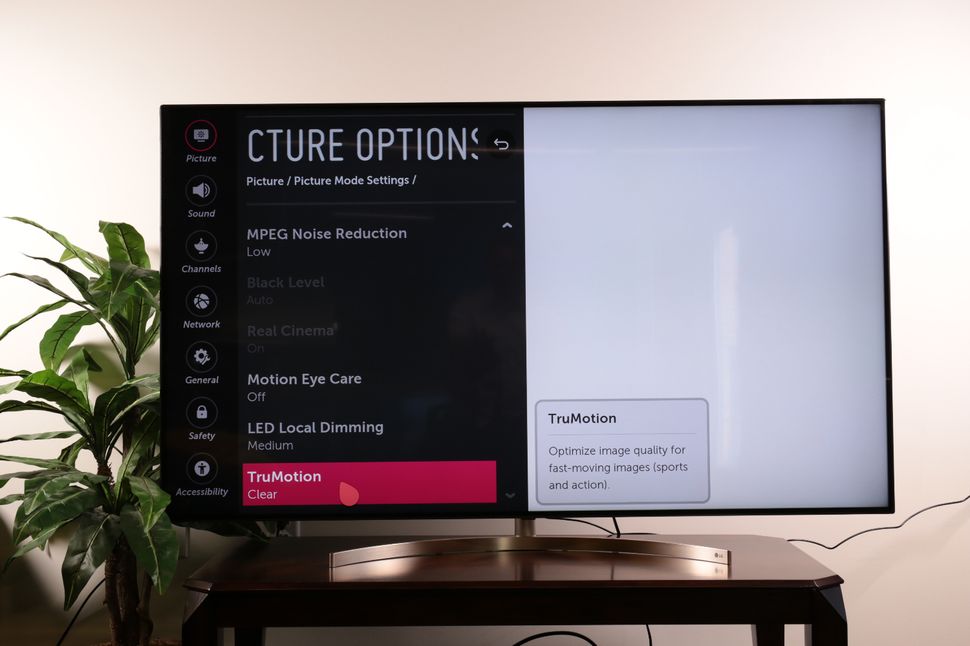

- SHOULD I TURN OFF MOTION SMOOTHING HOW TO
- SHOULD I TURN OFF MOTION SMOOTHING MOVIE
- SHOULD I TURN OFF MOTION SMOOTHING FULL
- SHOULD I TURN OFF MOTION SMOOTHING TV
Older TV models might have the TruMotion setting hidden in different menus or call it by its generic name.

Scroll down again until you find “TruMotion” and select it.Scroll down to the end of the menu and choose “Picture options.”.Pick the first option from that menu called “Picture mode settings.”.On the drop menu on the left, navigate to the first option, “Picture,” and select it.Press the “Settings” button (the one with the gear icon) on your remote.Turning it off is rather simple and can be done in the following six steps:
SHOULD I TURN OFF MOTION SMOOTHING HOW TO
How to Turn Off Motion Smoothing on LG TVĬompanies tend to name the motion smoothing effect differently, and LG’s name for motion smoothing is “TruMotion.” This is what you will need to look for in the TV settings. The case against the option got to the point where a few well-known filmmakers and actors complained that it ruined the way they intended their movies to look.
SHOULD I TURN OFF MOTION SMOOTHING FULL
This can be beneficial for some programs, like live sports, where movement is from side to side and the camera does not move much.īut in the case of film or TV shows, it can make movement unnatural and the picture distorted or blurry, ruining the look of 4K or Full HD resolution. Ideally, motion smoothing makes the transition between the pictures smoother to the eye and removes stutter. The entire process happens in nearly real-time for every frame.
SHOULD I TURN OFF MOTION SMOOTHING MOVIE
Sports aren't quite the mastered, artistic vision of a movie or TV show, after all. That means that the soap opera effect is less of an issue, as viewers want a more realistic image. In addition, a sports feed may have images that move at 60 frames per second, depending on your cable provider. This is precisely what motion smoothing fixes without adding more problems to the experience. You've probably noticed this if you've ever seen the video stutter as the picture pans across the field. Due to how TVs draw the pictures they show, this left-to-right motion wreaks havoc on the picture. On the flip side, motion smoothing is a useful feature when you're watching live sports, especially sports involving a ball that gets passed, kicked, thrown, or shot. Why Motion Smoothing Is Good for the Super Bowl You can find the option within your TV's video settings ( check out this story to find the setting based on your TV brand). So, yes, turn off motion smoothing if you're watching a TV show or movie. Most content was created, edited, and mastered at 24 or 30 frames per second, so making it look smoother is extremely jarring. Motion smoothing bumps those numbers up to 60, 120, or even (depending on the math of the TV manufacturer) 960 with different tricks. It's often called the "soap opera effect," and it makes the movies and shows you're watching look like they're all recorded for daytime TV.įilm content is usually recorded at 24 frames per second, and TV content is usually kept at 30fps. It works, but the result is a video that looks unnatural. These frames are interpolated, calculating halfway points and processing the picture to keep the video even and consistent (often in conjunction with patterns of backlight flickering to further enhance the effect).

It works by injecting new frames between the frames in a video signal to make the image motion look less jerky. Motion smoothing is a video-processing feature found in most TVs. Depending on your TV model, the interface for turning motion smoothing on might look something like this (this one is for Roku TV) What Is Motion Smoothing?


 0 kommentar(er)
0 kommentar(er)
